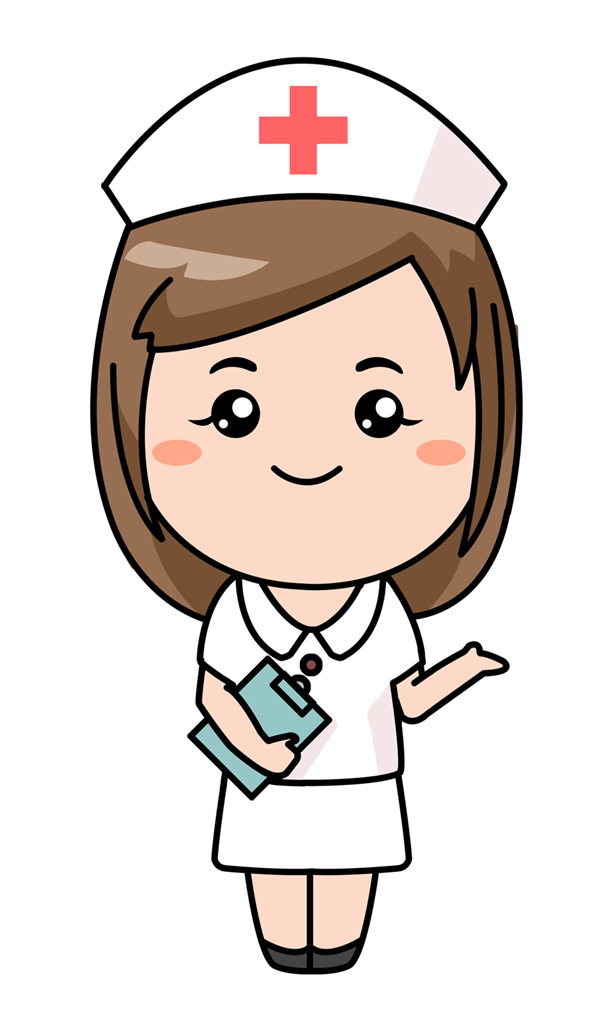Development of Nursing
| Site: | Nilai Uni Connect |
| Course: | Fundamentals of Nursing I |
| Book: | Development of Nursing |
| Printed by: | Guest user |
| Date: | Saturday, 24 May 2025, 7:23 PM |
1. EVOLUTION OF NURSING
Nursing has grown and changed over time due to several key influences:
Women’s Roles
Nursing began as an extension of traditional roles held by women—such as wives, mothers, daughters, and sisters—who naturally provided care and support to others. These caring roles helped shape the early image of nursing.
Religion
The religious values, such as Self-denial; Spiritual calling; Devotion duty; hard work, especially in the Christian value of “love thy neighbor as thy self” and Christian parable of the good Samaritan.
- Knights of Saint John of Jerusalem (Knights Hospitaller)
- Knights of Saint Lazarus – cared for people with leprosy and chronic diseases
- Built hospitals and managed care standards
- Theodore Fliedner also helped develop nursing by reopening the Deaconess order and starting a hospital and training school in Kaiserswerth, Germany.
Wars greatly influenced nursing by showing the need for trained care:
- Crimean War (1854–1856)
The inadequacy of care given to soldier led to a public outcry in Great Britain. The role of Florence Nightingale played in addressing this problem is well known. She transformed the hospital setting, setting up sanitation practices like hand washing and washing clothes properly and regularly. - American Civil War (1861–1865)
Several nurses emerged for their contributions, e.g.- Harriet Tubman & Sojourner Truth. Both provided care to injured and safety to slaves fleeing to the North on the underground Railroad.
- Mother Biekerdyke & Clara Barton - gave care to injured and dying soldier.
- Authors Walt Whitman & Louisa May Alcott volunteered as nurses to give care to injured soldiers in military hospitals.
- World War II
The Cadet Nurse Corps was created to address the severe nurse shortage during the war.
Societal Attitudes
Before mid-1800’s nursing was without organization, education and social status. Usual public negative attitudes and image toward nurses include: Woman’s place was in the home; No respectable woman should have a career.; Woman is said to be a wife and mother; Pleasant companion for his husband; Responsible mother for her children. However, the Guardian Angel or Angel of Mercy image arose in the latter part of 19th century because of Florence Nightingale during the Crimean War, which are Respect for the nursing profession; Granted women the right to vote and allow nurse to control their profession. Nightingale also raised the status of Nursing through education, where nurses were no longer untrained housekeepers but people educated in the care of the sick.
2. DEFINITION OF NURSING
Definitions of Nursing by Key Figures
Definitions of Nursing by Professional Nursing Associations
Common Themes in Nursing Definitions
2.1. Definitions of Nursing by Key Figures
 |
Florence Nightingale (1860) Virginia Henderson (1966) Virginia Henderson was one of the first modern nurses to define nursing. She defined nursing as the unique function of the nurse is to assist the individual, sick or well in the performance of those activities contributing to the health or its recovery. (or to peaceful death). It means the client would perform unaided if he had the necessary strength, will or knowledge and to do such a way as to help him gain independence as rapidly as possible. In 1966, Henderson described nursing in relation to client and the client’s environment as compared to nightingale, Henderson saw the nurse as concerned with both the healthy and the ill individual. |
|---|
2.2. Definitions of Nursing by Professional Nursing Associations
Over time, professional nursing organizations and theorists have helped shape how nursing is defined. These definitions reflect nursing’s growth as a science and caring profession.
American Nurses Association (ANA)
- 1973
Nursing practice as direct, goal oriented and adoptable to the needs of the individual, the family and the community during health and illness. - 1980
The ANA updated its definition:
"Nursing is the diagnosis and treatment of human responses to actual and potential health problems." - 1995
The ANA added key elements to highlight the science and art of caring in nursing. It described four essential features:- Attention to the full range of human experiences and responses to health and illness without restriction to a problem focused orientation
- Integration of objective data with knowledge gained from an understanding of the client or group’s subjective experience
- Application of scientific knowledge to the processes of diagnosis and treatment
- Provision of a caring relationship that facilitates health and healing
Canadian Nurses Association (CNA)
- 1987
Defined nursing as a dynamic, caring, helping relationship which the nurse assists the client to achieve and obtain optimal health.
Nurse Theorists and Theoretical Definitions
In the latter 20th century, several nurse theorists developed their own theoretical definitions of nursing. Theoretical definitions are important because they go beyond the simplistic common definitions. They described what nursing is; The relationship among nurses and nursing, the client, the environment and the intended client outcome: health.
2.3. Common Themes in Nursing Definitions
Certain themes are common to the definitions of nursing, such as:- Nursing is caring
- Nursing is an art
- Nursing is a science
- Nursing is client centered
- Nursing is holistic
- Nursing is adoptive
- Nursing is concerned with health promotion, health maintenance, and health restoration
- Nursing is a helping profession
3. RECIPIENTS OF CARE

| Consumers | Consumer is an individual, group of people, or community that uses a service or commodity. People who use health care products or services are consumers of health care. |
| Patient | Patient is a person who is waiting for or undergoing medical treatment and care. The word patient came from a Latin word meaning “to suffer” or “to bear”. Traditionally the person receiving health care has been called a patient. Usually, people become patients when they seek assistance because of illness or for surgery. |
| Clients | Clients is a person who engages in the service or services of another who is qualified to provide this service. The term client presents the receiver of health care as laboratories in the care, as people who are also responsible for their own health. The health status of the client is the responsibility of the individual in collaboration with health professionals. |
4. SCOPE OF NURSING PRACTICE

Nurses provide care for three types of clients, which are individuals, families and communities. The nursing practice involves four areas:
- Promoting health and wellness
Wellness is a state of well-being. Engaging in attitudes and behavior that enhance the quality of life and maximize personal potential (Anspaugh, hamrick, & Rosata, 2001). Nurses promote wellness in clients in both healthy and ill by improving nutrition and physical fitness; preventing drug and alcohol misuse; restricting smoking; preventing accidents and injury at home and in the workplace. - Preventing illness
The goal of preventing illness is to maintain optimal health by preventing disease. The nursing activities includes Immunizations; Prenatal and infant care; Prevention of sexually transmitted disease. - Restoring health
It focuses on the ill client, and it extends from early detection of disease through helping the client during the recovery period. The nursing Activities includes, providing direct care to the ill person, such as administering medications, baths and specific procedures and treatment; and Rehabilitating clients to their optimal functional level following physical or mental illness, injury, or chemical addiction. - Care of the dying
In this area provides comforting and caring for people of all ages who are dying. Includes: Helping clients as comfortably as possible until death and support persons cope with death. Usually, nurses carry these activities at home, hospitals, extended care facilities and some agencies, like hospices are specially designed for this purpose.
5. ROLES AND FUNCTIONS OF THE NURSE
Nurses assume a number of roles when they care to clients. They carry these roles concurrently, not exclusively of one another. Nurses role required at a specific time depends on the needs of the client ad aspects of the particular environment. The following are some roles and function of a nurse:
- Care and assist the client physically and psychologically while preserving the client’s dignity, which encompasses: Physical, Psychosocial, Developmental, Cultural and Spiritual level. Examples of required nursing actions are: Full care of the dependent client; Supportive and educative care to assist client attain their highest possible level of health and wellness. The Nursing process provides the nurse with a framework for providing care. A nurse may provide care directly or delegate it to other caregivers.
- Communication is integral to all nursing roles Nurses communicates with: Client, Support persons, Other health professional and People in the community. The role of the communicator is when the nurse identifies client’s problems and communicates these verbally or in writing to other member of the health team. The nurse must able to communicate clearly and accurately in order for a client’s health care needs are met.
- Nurse teach clients learn their health and the health care procedures they need to perform, to restore or maintain health. Activities includes: Nurse assesses client’s learning needs and readiness to learn; Sets specific learning goals in conjunction with the client; Enacts teaching strategies. Nurses also teach unlicensed assistive personnel to whom they delegate care and share expertise with other nurses and health professional.
- Client Advocate. Nurse acts to protect the client. In this role the nurse may represent the client’s needs and wishes for information to the physician, also assist clients in exercising their rights and help them speak up for themselves.
- Counseling is the process of helping a client to recognize and cope with stressful Psychologic and social problems. The nurse counsel healthy individuals with normal adjustment difficulties and focuses on helping the person develop new attitudes, feelings and behavior and encouraging clients to look at alternatives’ behaviors, recognizing the choices and develop a sense of control.
- The nurse acts as a change agent when assisting others (clients) to make modifications in their own behavior. Nurses continually deal with change in the health care system such as: Technological change; Change in the age of the client population and Changes in medication.
- Nurse leader who Influences other to work together to accomplish a specific goal. The leader role can be employed in different level: Individual client; Family; Group of clients; Colleagues; The community.
- Nurse case manager works with the multidisciplinary healthcare team to measure the effectiveness of the case management plan and to monitor the outcomes. The case manager works with the primary or staff to oversee the care of a specific caseload. For some agencies, the case manager is the primary nurse or provides some level of direct client care and family. Insurance companies also develop a number of roles for nurse case manager, and responsibilities.
- Research Consumer. Research work of the nurse includes Have some awareness of the process and language of research; Be sensitive to issues related to protecting the rights of human subjects; Participate in the identification of significant researchable problems; lastly be a discriminating consumer of research findings.
- Nurses are fulfilling expanded roles, such as: Nurse practitioner; Clinical nurse specialist; Nurse midwife; Nurse educator; Nurse researcher and Nurse anesthetist.

6. CAREER PATHWAYS
There are a multitude of career opportunities to choose from including:► Medical/Surgical - Care for a variety of ill or injured patients and patients who have undergone surgery.
► Critical Care - Care for critically ill or injured patients of all ages.
► Labor and Delivery - Care for mothers and babies before, during, and after delivery.
► Pediatrics - Care for ill or injured children.
► Cardiac Care - Care for patients with issues involving their hearts.
► Geriatrics - Care for elderly ill or injured patients.
► Neurology - Care for patients with illnesses or injuries involving the nervous system.
► Dermatology - Care for patients with skin conditions.
► Orthopedic - Care for patients with illnesses or injuries to muscles and bones.
► Same Day Surgery/Post Anesthesia Care Unit Recovery Room - Care for patients immediately before or after surgery.
A nurse with advanced education adds options to the following career opportunities:
► Clinical Nurse Specialist - Provides care to patients with complex illnesses or injuries and often responsible for the continuing education of staff nurses.
► Nurse Practitioner - Diagnoses and treats a wide variety of patients.
► Research - Involved with research studies to increase the knowledge base of the nursing profession.
► Nurse Midwives - Care for women during pregnancy and deliver their babies.
► Nursing Professor - Teaches nursing students in nursing schools.
► Nurse Anesthetist - Provides anesthesia to patients during surgical and non-surgical procedures.
